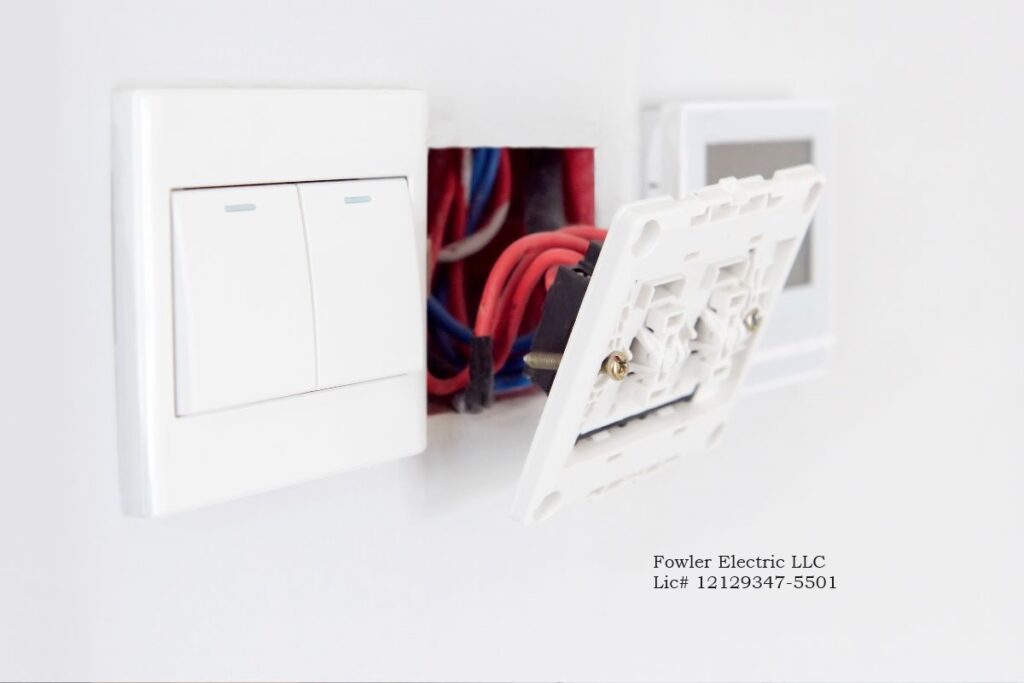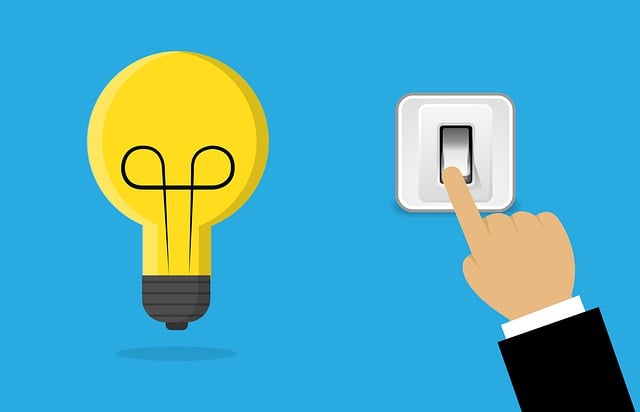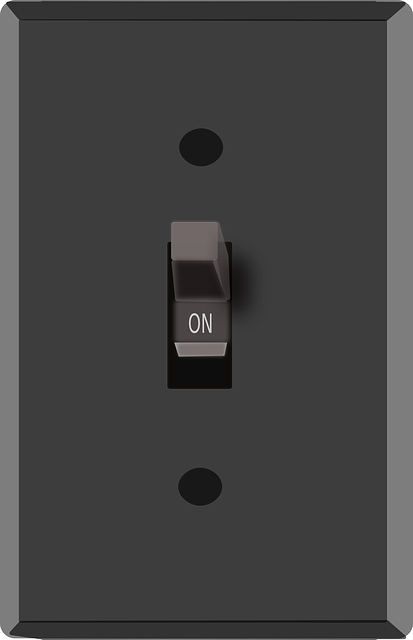
Today we will talk about 5 essential electrical switches every contractor should know about.
Introduction
Why are electrical switches essential in any project building? The key to both safety and efficiency is that control switches give an idea of the quality of the building management. These devices are a must-have to ensure safe interaction with electrical systems. They minimize the chance of accidents and simplify the electric systems’ control over lighting and power. Their function is not only to carry out the structures, but they also serve the design aesthetics and operational systems. Switches become more than instruments. They are building blocks that not only boost the utility of the spaces but also improve their user-friendliness and safety. Their careful use can create real chances for the project to become successful
1. Single-Pole Switches
The single-pole switch is the most common of the basic electrical switches in both homes and offices. They represent the highest level of usage overall. Why are they so rampant? The simplicity and non-complication of their design stand out from the crowd. These switches have two brass terminals. We will use one for the incoming hot wire and one for the fixture outgoing wire. They include a simple ON/OFF operating interface that controls a single circuit in the room, thus making them perfect for single-circuit rooms where only one switch controls the light or the fan.
In addition, they have basic functions and can bring variety into design and aesthetics. They are currently available in various styles and colors to match the interior. Installation usually is simple. However, using the local electrical code and standards is important to prevent any safety and compliance problems.
Knowing the intricacies of single-pole switch installation will, among other things, help the contractor work efficiently and effectively. Proper grounding is important as it involves connecting to the ground wire in the circuit, normally green or bare copper. It is a basic step towards the prevention of electric shock incidents and safe switch operation.
To sum up, the single-pole switch is a basic piece of electrical system. Reputed for its simplicity and reliability. As evidenced in the home, office, or industrial setting, smart metering functions for power management have become a necessity. Great contractors prioritize correct installation practices and familiarize themselves with the diverse options available to maximize both safety and customer satisfaction
2. Three-Way Switches
Three-way switches offer a flexible solution for controlling lights from multiple locations, differing significantly from the simpler single-pole switches. While single-pole switches allows control from one point, three-way switches are used in pairs. They are ideal for lighting up areas where two switches control a single light source. Hallways, staircases, or large rooms are examples of common areas for three-way switches.
How do three-way switches work? Each switch in the pair has three terminals: one common (usually colored differently) and two travelers. The common terminal connects to the hot wire or the light, depending on the switch’s position in the circuit. The travelers connect the two switches, allowing the current to pass through either path. This configuration creates flexibility, enabling the light to be toggled on or off from either location.
Three-way switches are the power players that enable any room to be used in a number of ways. For instance, a staircase needs access to the light controls from both the top and the bottom. Instead of turning back to the source of the light halfway down the stairs, one can switch off the light at the switch at the entrance. Long hallways where you have a switch at both ends allow for the ease of the lighting control.
A three-way switch installation by a contractor must include not only the wire that goes through but also the proper installation of the switch itself. This will make the home or building more useful and safer for people. Installing these switches will achieve this correctly. This, in turn, will enhance the quality of lighting control and hence boost responsiveness and adaption of the spaces to the user’s needs.

3. Double-Pole Switches
A double-pole switch is designed for a 240-volt circuit, which regulates high-powered appliances and machinery. Unlike single-pole switches, which are used to control 120-volt circuits, double-pole switches control two hot wires simultaneously. They are capable of shutting off both sides of the circuit. This is critical for any electrical system that deals with heavier loads in terms of safety and efficiency of operation.
These switches are of great help in industrial applications, which require heavy machinery with a reliable power supply, but also to the line of service appliances like dryers, water heaters, and air conditioners. A significant advantage double-pole switches provide to either residential or commercial environments is the ability to interrupt or activate 240-volt circuits. This is crucial for running high-demand equipment.
Double-pole switches are crucial in the effective and safe management of power-intensive applications. They are vital in places that require heavy voltage and current and are part of a sturdy electrical solution.
4. Dimmer Switches
Dimming switches, energy efficient and ambiance enhancing, provide a perfect dynamic solution for the lighting of modern homes. These switches control the brightness of the lamps allowing customization of the lighting intensity according to events or moods. Dimmers achieve this by simply changing the amount of voltage sent to the bulb. They can effectively slash energy consumption in lamps, which saves electricity and also increases the lifespan of the bulbs.
Another advantage of the dimmer switch is that it provides versatile lighting in any room. Whether one wants the lights down for a cozy evening or up for an area of work, it is exact and instant control. This versatility makes dimmer switches popular in residential use—from living rooms and dining areas to bedrooms. Also popular with commercial facilities that need variable lighting for events or presentations.
In this regard, it’s important to install dimming switches that go well with the lighting types. Not all dimmers suit all kinds of light bulbs. For example, LEDs need to be connected with some dimmers, while normal bulbs can be operated with most dimmers available. Compatibility also serves to resolve problems such as flickering, buzzing, or bulbs dying prematurely.
Dimmers are worthwhile for functionality and aesthetics in a lighting system. Properly placed on the ceiling, these shades provide very efficient energy use and increase decorum for style-oriented and energy-efficient buyers.

5. Motion Sensor Switches
Motion sensor switches provide security while being economic in power consumption, as they activate lights only when people walk in them. They are designed to sense motion via various technologies, such as infrared and ultrasonic waves, hence providing an attractive energy-saving solution and time while improving security.
On the upside, motion detector switches are very energy efficient due to their design. Lights come alive when motion is sensed, cutting down on the number of hours per day lights are on by error or a lack of human input. This function enables living comfortably and slows down energy waste, especially in seldom-used spaces such as basements, storage rooms, and bathrooms.
These can be used in external areas such as driveways, walkways, and clubs, as well as in garages. When movement is detected the motion-sensing lights provide marked security and improve the situation when residents leave or enter the property in the dark.
In addition to security and energy savings, motion sensor switches are user-friendly. They provide hands-free operation, useful in spaces where one’s hands are often full, such as laundry rooms or garages. Installation considerations should include ensuring the switch is compatible with the existing lighting system and is positioned to detect movement effectively without interference from environmental factors like direct sunlight or HVAC systems.
Overall, motion sensor switches are a practical and effective tool for enhancing the functionality, security, and efficiency of residential or commercial properties. Their smart technology helps users maintain ease of living while conservatively managing energy use and bolstering security measures.
Final Words:
In the course of this discussion, we have discussed 5 different types of electrical switches, which are crucial and helpful for modern electrical setups. From the elementary, single-pole switches designed for the most basic tasks to the relatively complex three-way and double-pole switches that provide advanced functionality—this includes energy-saving dimmer and motion sensor switches offering even more convenience and security.
Contact Fowler Electric LLC to discuss switches and other lighting projects that will best serve your home or business. Make the smart switch today to ensure your projects shine tomorrow!

